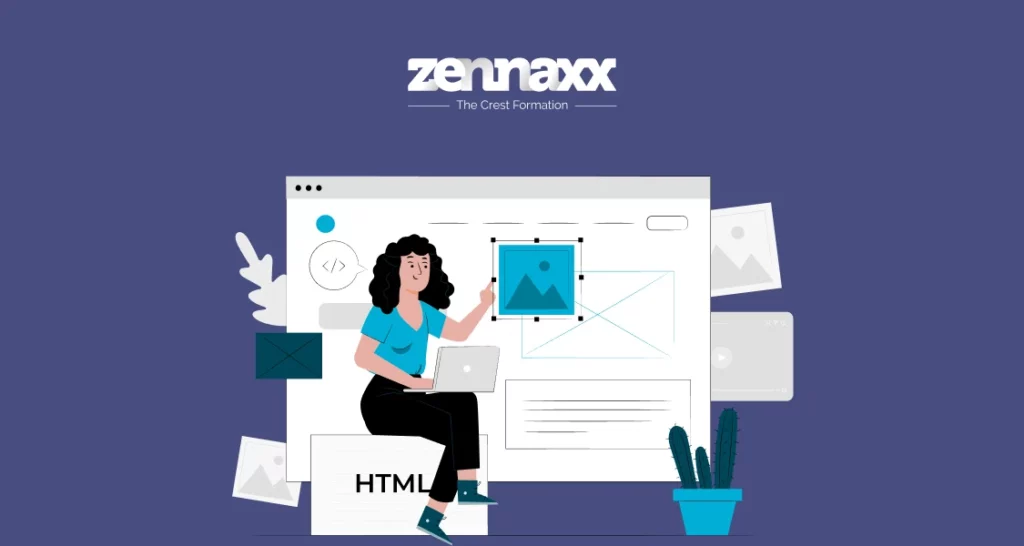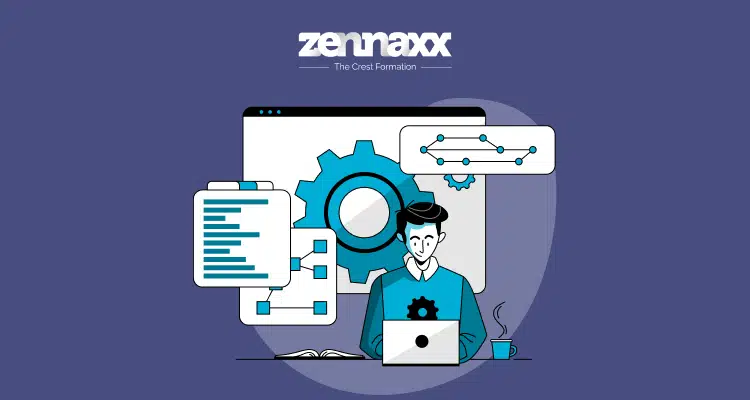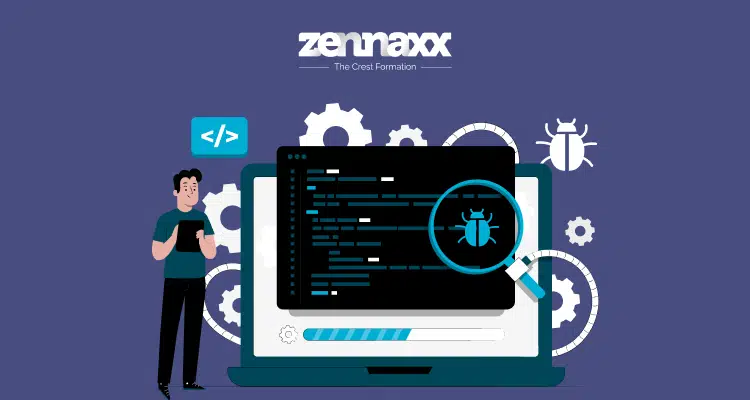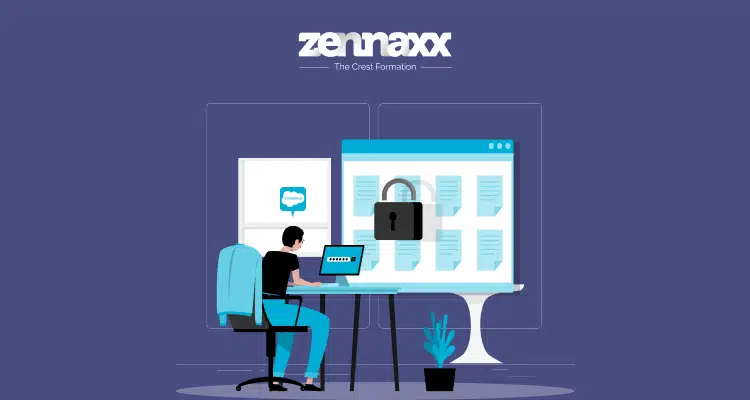What’s familiar about Amazon, Netflix, and eBay? These businesses built businesses on a website. Selling books online(Amazon) to renting DVDs(Netflix), websites have been pivotal for many companies. But why does web development make more sense in the current market?
The reason is simple- “”Online presence!””
There are more than 1.13 billion websites, and not being one of them makes no sense. But being present and visible on the internet are two different things. Competing against the massive amount of websites live on the internet requires strategic web development.
This is where you need to analyze your requirements, understand the required tech stack, and keep up with current trends. In this article, we will discuss the web development process, its elements, the tech stack, and key trends in the market.

What is a website?
A website is a suite of several files and code stored on a server, which delivers data when users request through a browser.
What is web development?
The process of developing a website for your business is called Web development. This process involves the design of the website structure and adding functionalities that solve crucial customer pain points.
The Web development process includes developing the back-end and front-end, which helps. The website offers functionalities to users.
For example, the front end comes into play if a user accesses the website through the user interface. Once a user requests data, interacting with the website’s back-end will become essential.
Front-end Development: Gateway for your website!
Front-end development is a critical element of the entire Web development process, which deals with the presentation side of a website. You can use programming languages like HTML, CSS, and Javascript to create the website’s presentation aspect, including the user interface.
Front-end development requires skilled professionals with knowledge of different programming languages, such as
#1. HTML
HTML (Hypertext Markup Language) is a crucial markup language that you can use to structure websites. For example, a website will have multiple content in different formats like bullet lists, paragraphs, bold text, or italics.
There are a series of elements in HTML that you can use to wrap content and represent it in a specific way. Wrapping tags also allows you to hyperlink an image or word. For example, <p></p> tags enclose the text within a paragraph.
#2. CSS
CSS or Cascading Style Sheets helps you define the layout of a website and how a web page will be visible to the user. You can separate the presentation aspects of a website from the content. This will allow you to update the web page easier.
Separating the content style from the web page structure offers improved accessibility, flexibility, and styling control.
#3. JavaScript
JavaScript is a programming language that you can use to add interactive features to your website and also lets you display updates, maps, graphics, and videos. It helps create dynamic content like dropdown menus, graphics, and colours. You can modify HTML and CSS and manipulate, validate, and calculate data with JavaScript.
UI vs. UX: The yin-yang of web development!
While developing the front end in a web development process, the most critical question is whether user experience design differs from it. This is crucial because aiming for better UX is essential to business success. How engaging and functional your website is affects the user’s perception of the web experience.
So, clarity between front-end development and UX design is essential. On the contrary, you will need both to provide a user-friendly experience for your customers.
Here is how!
User experience or UX design refers to creating easy-to-use digital products for your customers, like websites and web apps. On the other hand, front-end development includes creating a user-friendly, highly functional user interface.
How do both UI and UX co-relate?
UX simplifies the structure, and UI brings it to life through front-end development. In other words, UX design is the floor plan on which you use HTML, CSS, and Javascript to build UI.
1. Back-end development: BTS of websites!
Back-end development refers to the server side of a website, which focuses on how your system reacts to user requests behind the scenes. It encapsulates the development of mechanisms that successfully process data and perform specific actions on your website.
Back-end development includes,
- The server-side scripting process involves writing code for browsers to communicate with databases and serve data to users.
- Databases that store, process, analyze, and even delete data as per requirements.
- Application Programming Interfaces(APIs) enable systems and apps to communicate with each other.
- Web architecture is the underlying structure of a website or web application that ensures prompt response to user requests.
Back-end development requires knowledge of programming languages such as Python, Java, and Ruby.
The process of back-end development involves,
- Designing the underlying architecture for a high-performance website
- Developing custom APIs
- Ensuring proper connection between databases, servers, and apps.
- Ensuring data security and compliance of the website,
Individually, front-end and back-end have no impact on website creation. However, you can develop them separately and combine them through APIs. Another approach for web development is full-stack development, which encapsulates both the front-end and back-end.
Transform your business with web development
Zennaxx, a leading software development firm in Canada, has delivered 700+ bespoke solutions spanning various industries.
Full-stack web development: Combining front and back-end
The full-stack development process involves the development of your website, including the front-end and back-end. While developing front-end and back-end independently requires two different developers, you will only need one full-stack developer.
The entire process involves full-stack developers,
- Designing the websites and web apps
- Creating prototypes and testing them
- Designing and implementing UI/UX designs
- Building back-end mechanisms, including database, APIs, and architecture
- Deploying sites and testing for security
Some of the popular full-stack development technologies are,
- MEAN stack is the most suitable for developing a full-stack Javascript web app with MongoDB, ExpressJS, Angular, and NodeJS at its core.
- Ruby on Rails is an advanced server-side scripting language, and what makes it suitable for your web development are practices like not repeating yourself(DRY) or using convention over configuration.
- LAMP stack comprises several open-source apps that you can use to develop websites like the Linux operating system, the Apache HTTP server, the MySQL relational database management system, and the PHP programming language.
- MERN stack is simply a variant of MEAN stack where React replaces Angular.
- Django is most suitable for web development if you want to leverage Python at the core.
While these tech stacks suit full-stack development, you will need much more for the entire project.
Web development tools: Frameworks, libraries, and IDEs.
Here are some web development tools you can use for your project:
Front End development tools,
1. React is a Javascript library that offers features like a full-fledged front-end framework. It provides virtual DOM, which makes front-end development far more efficient. Further, you can also leverage reusable components in React for rapid growth.
2. Vue.js is another Javascript library that focuses on the view layer of your website. It supports cross-platform development and offers ease of unit testing for your projects.
3. Angular is a popular framework for front-end development, which comes with client siodeMVC (Model-View-controller) and MVVM (Model-View-View-Model) architecture. Further, it offers two-way data binding, dependency injection, and component-based architecture.
4. Bootstrap is another powerful front-end web development tool offering cross-browser compatibility and building responsive UI capabilities. Bootstrap lets you easily create forms, buttons, headers, and navigation menus.
5. Tailwind CSS is a CSS framework that you can use to design UI components without writing CSS codes. You can use Tailwind CSS and leverage utility classes of HTML.
Planning web development?
Ready to elevate your web projects? Partner with us for seamless web app solutions.
Back-end development tools
- PHP is a popular back-end development tool that you can use to develop websites. It supports different Content management systems (CMS) like WordPress and Joomla. You can also embed PHP with HTML, CSS, and other front-end dev tools for full-stack development capabilities. It also integrates popular databases like MySQL, Oracle, and MS SQL Server.
- Python is a programming language that provides an easy-to-use syntax for web development. It supports cross-platform development and other programming languages like C, Java, etc.
- Node.js is another open-source tool for website creation, with Javascript at its core. You can use it for server-side web development and build real-time data-intensive websites.
- Ruby on Rails is a powerful back-end development tool that you can use to build websites. You can easily modify codes with Ruby on Rails and add new features for website creation.
- Laravel is a PHP-based framework for web development that supports validation views, Blade templates, data migrations, and routing. It has a configuration environment for your testing process, making test executions easier.
Integrated Development Environments (IDEs)
1. Visual Studio Code is a popular IDE for website creation across Windows, Mac, and Linux. It offers an influential source–code editor for Javascript website development. This IDE comes with support for web, mobile, and game development.
2. IntelliJ IDEA is an HTML-based IDE that improves your productivity through decluttering GUI. It comes with intelligent coding assistance and performs automatic data flow analysis for your projects. You can use it with HTML, SQL, JPQL, and JavaScript.
3. Eclipse is another popular free web development IDE that supports programming languages like Java, C++, Python, and PHP. It offers an interface and features like automatic syntax validations, ready code templates, and code refactoring.
Future of web development: Emerging trends and technologies
The website creation process has seen a transition with innovations and trends transforming the way users interact with websites.
Some emerging trends in web development are Response Animation Idle Load(RAIL), Progressive Web Apps(PWAs), Artificial Intelligence, and motion design UIs.
Response Animation Idle Load (RAIL).
RAIL is a popular web design concept that can be a significant trend for website creation in the future. It focuses on better user experience and improves the load time of a website within 1 second. In this approach, the input received by a website is queued during the idle task, reducing the available processing time.
Load important content early, and while users interact with the initially loaded elements, complete the deferred work in the back-end.
RAIL comprises four key elements, which are,
- Response to user input in 100ms or less.
- Animation rendering under 16ms
- Idle time needs to be under 50ms, and working in chunks of 50ms
- Deliver interactive content in less than 1 second.
Progressive Web Applications (PWAs)
PWAs are not a new trend in web development, but the latest innovation in this type of web app is attracting more businesses. It allows your websites to load quickly and offers offline features like access to maps for ride-hailing apps or images on sites like Pinterest.
What makes PWAs attractive is its mobile-first capabilities. This is crucial as 58.33% of traffic comes from mobile devices. So, choosing PWAs for web development makes more sense for your business.
AI and Machine Learning
Artificial intelligence is a transformative innovation that is changing business operations. For example, generative AI websites like ChatGPT have transformed how users get information and use the internet.
This trend of creating websites for generative AI functions and integrating large language models(LLMs) will continue in the future, creating more brilliant platforms for users.
Motion design UIs
Every website has several elements, like pop-ups, scrolling, and page header transitions. Motion design UIs allow these elements to load to reduce the total loading time. It also offers ease of navigation for users and reduces bounce rates.
It will enable website designers and developers to establish spatial relationships between screen and individual elements. This is key to website creation because it reduces the cognitive phenomenon of change blindness, which disrupts the visual stimulus of a user.
Conclusion
Website creation is a basic necessity for most businesses because it is a medium for users to interact with products and services. Web development helps you build platforms to improve user interactions, experience, and conversions.
However, it is crucial to understand the different elements of a website, how to develop them, and the tech stack needed for the development process. This is where a web development expert like Zennaxx can help you.
We offer top-tier web developers for your projects with tech stack expertise and capable of implementing the latest trends in the market. Get an estimate for web development services.






